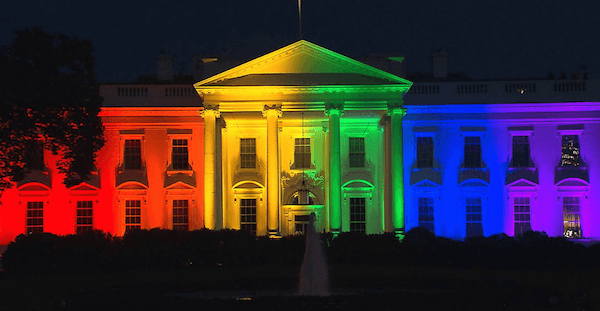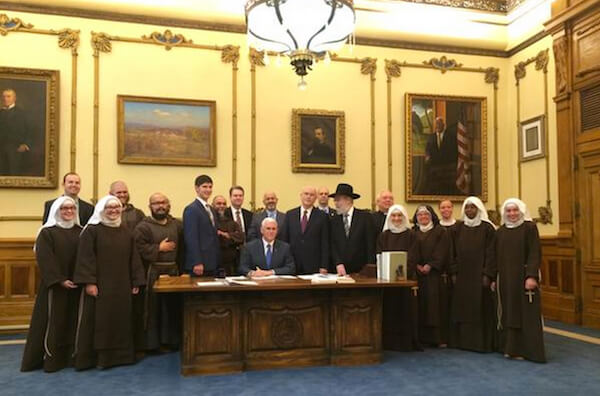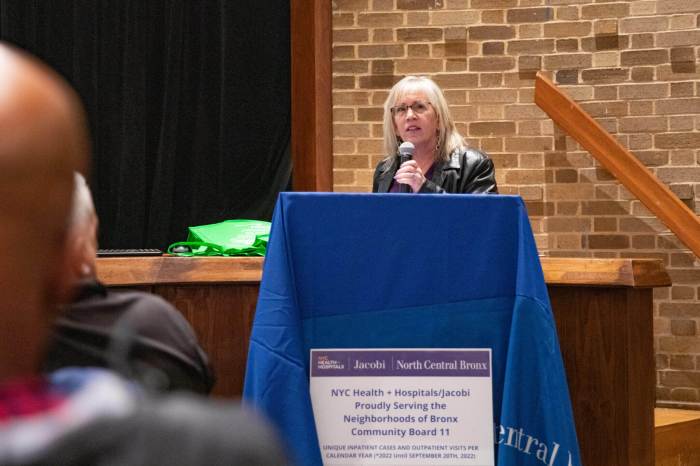US District Judge Milton I. Shadur. | 7TH CIRCUIT BAR ASSOCIATION
Reversing a position it held dating back 50 years, the Equal Employment Opportunity Commission (EEOC) last July issued a ruling that a gay man could charge a federal agency where he worked with sex discrimination in violation of Title VII of the Civil Rights Act of 1964 for denying a promotion because of his sexual orientation. The Baldwin v. Foxx decision is an administrative ruling, not binding on federal courts. Federal trial judges, in fact, remain sharply divided on the issue.
During May and June, judges in Virginia, New York, Illinois, Mississippi, and Florida issued rulings in response to motions by employers seeking dismissal of Title VII claims regarding sexual orientation discrimination. In each case, the employer argued that the plaintiff’s Title VII claim had to be dismissed as a matter of law because the federal employment discrimination statute does not forbid sexual orientation discrimination.
Title VII was enacted as part of the Civil Rights Act of 1964. The House committee considering the bill heard evidence regarding sex discrimination, but it decided to send the bill to the floor without including “sex” as a prohibited basis for discrimination, based on the view it was too controversial and might sink the bill. During the floor debate, Howard Smith of Virginia, a conservative Democrat opposed to the proposed ban on race discrimination, proposed an amendment adding “sex” to the list of prohibited grounds. Early histories about the bill suggested that Smith’s aim was to kill the measure. More recent accounts have countered with the view that Smith, although a racist, actually supported equal rights for women and genuinely believed that sex discrimination in the workplace should be banned. (His amendment did not add “sex” to parts of the bill that addressed discrimination in other areas.) Smith’s amendment passed as did the overall bill, and the Civil Rights Act went into effect in July 1965.
As EEOC presses cases nationwide, reckoning at Supreme Court seems just a matter of time
Because “sex” was added only through a House floor amendment, the Committee Report on the bill says nothing about it, and the subsequent debate in the Senate, where committee consideration was bypassed, devoted little attention to it. As a result, the “legislative history” of Title VII provides no explanation about Congress’ intention in including “sex” as a prohibited ground of discrimination.
For the quarter century that followed, the EEOC and the federal courts consistently rejected claims that the law outlawed sexual orientation discrimination. Without any legislative history to fall back on, they ruled that Congress must have intended simply to prohibit discrimination against women because they are women or against men because they are men, nothing more complicated or nuanced than that.
This interpretation was challenged in 1989, when the Supreme Court ruled in Price Waterhouse v. Hopkins that a woman who failed to conform to her employer’s sex stereotypes could bring a sex discrimination case under Title VII. That seminal case signaled a broader and more sophisticated view of sex discrimination.
Since 1989, some lower federal courts have used the Price Waterhouse ruling to allow gay or transgender plaintiffs to assert sex discrimination claims by relying on the sex stereotyping theory, while others have rejected attempts to “bootstrap” sexual orientation or gender identity into Title VII in this way.
More recently, several federal appeals courts have endorsed the idea that gender identity discrimination claims are really sex discrimination claims, and a consensus to that effect has begun to emerge.
Progress has been slower on the sexual orientation front.
Last summer’s EEOC’s decision in Baldwin v. Foxx presented a startling turnabout of the agency’s view. The EEOC adjudicates only those discrimination claims against federal government agencies, not non-governmental and state and municipal government employers. In Baldwin v. Foxx, the EEOC, exercising its appellate authority regarding claims by federal employees, reversed a ruling by the Transportation Department that a gay air traffic controller could not bring a sexual orientation discrimination claim under Title VII.
Looking at the developing federal case law since Price Waterhouse and seizing upon a handful of federal district court decisions allowing gay plaintiffs to bring sex discrimination claims under a sex stereotyping theory, the agency concluded that a sexual orientation discrimination claim is “necessarily” a sex discrimination claim and should be allowed under Title VII.
Since that ruling, last July 15, many federal district judges have faced motions by employers to dismiss Title VII sexual orientation discrimination claims. In some cases, district court judges were bound by appellate precedents within the federal circuit to which their decisions can be appealed. In other circuits, however, the question is an open one and some judges have followed the EEOC’s lead.
On May 5, US District Judge Robert E. Payne in Virginia found that he was bound by Fourth Circuit precedent to reject a sexual orientation discrimination claim under Title VII, even though the plaintiff, an out gay administrative assistant at Virginia Union University, alleged clear evidence of anti-gay discrimination by the university president. Payne, though noting the split among federal trial courts regarding the EEOC’s Baldwin ruling, found that a 1996 Fourth Circuit decision in Wrightson v. Pizza Hut of America was still binding.
A district judge on Long Island, Sandra J. Feuerstein, reached a similar result in Magnusson v. County of Suffolk on May 17, dismissing a Title VII claim by an out lesbian custodial worker at the Suffolk County Department of Public Works, who alleged that her failure to comply with her supervisors’ stereotypes of how women should dress made her the object of discrimination. Feuerstein, relying on prior decisions by the New York City-based Second Circuit Court of Appeals, dismissed the claim, asserting that the plaintiff’s “claims regarding incidents of harassment based on her sexual orientation do not give rise to Title VII liability.”
In contrast, on May 31, a senior district judge in Illinois decided that in light of the EEOC’s Baldwin ruling, he would not rule on an employer’s motion for dismissal but rather stayed the case pending resolution of an appeal of a dismissal of another Title VII sexual orientation case at the Chicago-based Seventh Circuit Court of Appeals. In Matavka v. Board of Education, Judge Milton I. Shadur confronted a school district’s motion to dismiss the claims by an employee at J. Sterling Morton High School in Cicero, a Chicago suburb, that “he experienced severe harassment from his coworkers and supervisors, including taunts that he was ‘gay’ and should ‘suck it,’ frequent jokes about his perceived homosexuality, and hacking of his Facebook account to identify him publicly as ‘interested in boys and men’, and an email stating ‘U… are homosexual.’”
Shadur noted that existing precedent in the Seventh Circuit rejects sexual orientation discrimination claims under Title VII, which would “would appear to bury” Matavka’s lawsuit. However, last September 30, that circuit heard a plaintiff’s appeal from the dismissal by a different federal trial judge of a sexual orientation discrimination claim in the case of Hively v. Ivy Tech Community College in Valparaiso, Indiana.
“Should Hively follow recent district court decisions in finding Baldwin persuasive,” Shadur wrote, “that finding plainly would affect the disposition of Morton High’s motion. That being so, the prudent course at present is to stay this matter pending the issuance of a decision in Hively.”
A three-judge panel of an appellate circuit cannot depart from existing precedent within that circuit, but a majority of the active judges in a circuit can do so. The Seventh Circuit sometimes moves quickly — as it did in 2014 when it ruled affirmatively on marriage equality cases out of Wisconsin and Indiana in just one week. But it has been eight months since oral arguments were held in Hively, which suggests that there may be lively discussion among the circuit’s nine active judges about a draft of the three-judge panel’s opinion. A Seventh Circuit ruling reversing the district court’s dismissal of the Hively complaint would be a major breakthrough for Title VII coverage of sexual orientation claims.
Meanwhile, two decisions issued in June took opposite views on the question. In Brown v. Subway Sandwich Shop of Laurel, US District Judge Keith Starrett of the Southern District of Mississippi bowed to prior Fifth Circuit rulings rejecting sexual orientation claims under Title VII. He even claimed, somewhat disingenuously, that the EEOC’s Baldwin decision did not support the plaintiff’s claim, stating that Baldwin “takes no position on the merits of the claim and resolves only timeliness and jurisdictional issues.” Though the EEOC ruling technically was about the Transportation Department’s dismissal of the claim and not ultimately on the merits, the EEOC unquestionably took a “position” on whether sexual orientation discrimination claims are covered by Title VII. Without doing so, it could not have established jurisdiction in the matter. In Baldwin, the EEOC clearly stated that sexual orientation discrimination claims are “necessarily” sex discrimination claims.
In contrast to Starrett, US District Judge Mark E. Walker of the Northern District of Florida was amenable to the EEOC’s position. Finding that the 11th Circuit Court of Appeals has no binding precedent on the question, he refused to dismiss a “perceived sexual orientation” discrimination claim in Winstead v. Lafayette County Board of County Commissioners on June 20. Pointing out that the 11th Circuit, in Glenn v. Brumby in 2011, ruled that a gender identity discrimination claim could be considered a sex discrimination claim under the Equal Protection Clause using a sex stereotyping theory, Walker found that the Baldwin ruling, which also discussed sex stereotyping as a basis for a sexual orientation claim, was persuasive and should be followed.
Walker rejected the argument made by some courts that using the stereotyping theory in this way was inappropriately “bootstrapping” claims of sexual orientation discrimination under Title VII.
“These arguments seem to this Court to misapprehend the nature of animus towards people based on their sexual orientation, actual or perceived,” he wrote. “Such animus, whatever its origin, is at its core based on disapproval of certain behaviors (real or assumed) and tendencies towards behaviors, and those behaviors are disapproved of precisely because they are deemed to be ‘inappropriate’ for members of a certain sex or gender.”
Walker concluded, “This view — that discrimination on the basis of sexual orientation is necessarily discrimination based on gender or sex stereotypes, and is therefore sex discrimination — is persuasive to this Court, as it has been to numerous other courts and the EEOC.”
He also asserted that it “follows naturally from (though it is not compelled by) Brumby, which is binding Eleventh Circuit precedent. Simply put, to treat someone differently based on her attraction to women is necessarily to treat that person differently because of her failure to conform to gender or sex stereotypes, which is, in turn, necessarily discrimination on the basis of sex.”
Ironically, Walker turned to an opinion written by the late Justice Antonin Scalia, an outspoken opponent of LGBT rights, to seal the deal. He quoted from Scalia’s opinion for the Supreme Court in Oncale v. Sundowner Offshore Services, a 1998 decision that same-sex harassment cases could be brought under Title VII.
“No one doubts, that discrimination against people based on their sexual orientation was not ‘the principal evil Congress was concerned with when it enacted Title VII,’” Walker wrote, quoting Scalia, and continued the quote, “‘But statutory prohibitions often go beyond the principal evil to cover reasonably comparable evils, and it is ultimately the provisions of our laws rather than the principal concerns of our legislators by which we are governed.’”
Scalia was opposed to relying on “legislative history” to determine the meaning of statutes, instead insisting on focusing on the statutory language and giving words their “usual” meanings.
Walker argued that his decision not to dismiss the Title VII claim “does not require judicial activism or tortured statutory construction. It requires close attention to the text of Title VII, common sense, and an understanding that ‘in forbidding employers to discrimination against individuals because of their sex, Congress intended to strike at the entire spectrum of disparate treatment of men and women resulting from sex stereotypes.’” That last quote came from a 1971 court of appeals ruling later cited approvingly by the Supreme Court.
Walker’s decision provides the most extended district court discussion of the merits of allowing sexual orientation discrimination claims under Title VII, but it will not be the last word, as the EEOC pushes forward with its affirmative agenda to litigate this issue in as many federal courts around the country as possible, building to a potential Supreme Court ruling.
So far, the Supreme Court has refused to get involved with the ongoing debate about whether sexual orientation or gender identity discrimination claims are covered under Title VII. It refused to review the 11th Circuit’s decision in Glenn v. Brumby, but it can’t put things off much longer. An affirmative Seventh Circuit ruling out of Chicago in the Hively case would create the kind of “circuit split” that usually prompts the Supreme Court to agree to review a case.


































